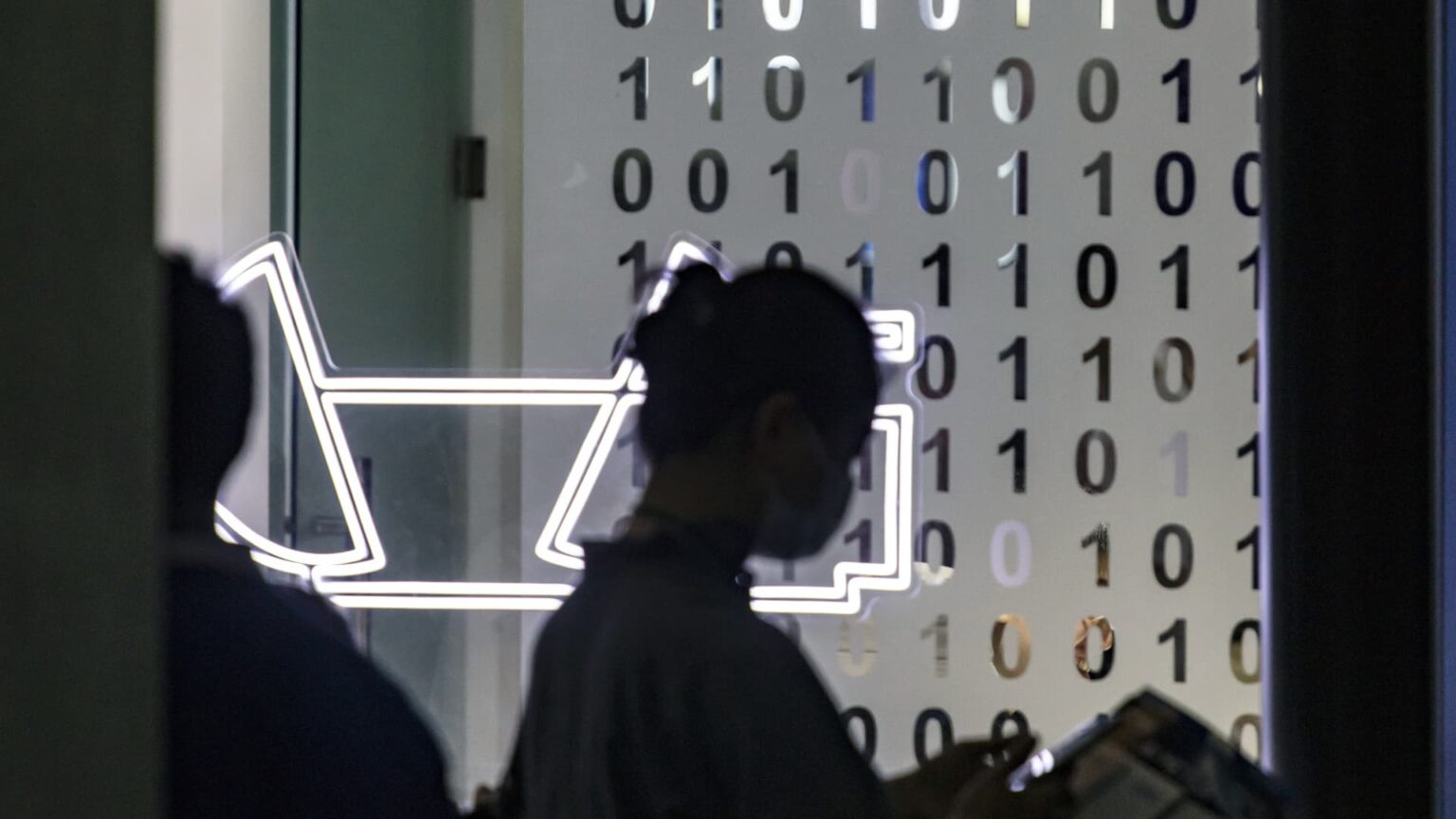Global Courant 2023-05-08 08:22:47
A hidden army of contract workers who have been doing the behind-the-scenes work of teaching AI systems how to analyze data so they can generate the kind of text and graphics that has amazed those using new popular products like ChatGPT.
Bloomberg | Bloomberg | Getty Images
Alexej Savreux, a 34-year-old in Kansas City, says he’s done all kinds of work over the years. He made fast food sandwiches. He has been a custodian and garbage collector. And he has done technical sound work for live theatre.
Today, however, his work is less practical: he is an artificial intelligence trainer.
Savreux is part of a hidden army of contract workers who have been doing the behind-the-scenes work of teaching AI systems how to analyze data so they can generate the kind of text and graphics that have amazed the people using new popular products like ChatGPT to use . To improve the AI’s accuracy, it tagged photos and made predictions about what text the apps should generate next.
The pay: $15 an hour and more, with no benefits.
Away from the spotlight, Savreux and other contractors have spent countless hours over the past few years learning OpenAI’s systems to provide better answers in ChatGPT. Their feedback fills an urgent and endless need of the company and its AI competitors: to provide streams of sentences, labels, and other information that serve as training data.
“We are grunt workers, but without AI there would be no AI language systems,” says Savreux, who has done work for tech startups including OpenAI, the San Francisco company that released ChatGPT in November and sparked a wave of hype around generative AI caused.
“You can design all the neural networks you want, you can involve all the researchers you want, but without labelers you don’t have ChatGPT. You have nothing,” Savreux said.
It’s not a job that will bring Savreux fame or fortune, but it’s an essential and often overlooked job in the field of AI, where the apparent magic of a new technological frontier can eclipse contract labor.
“Much of the discourse around AI is very congratulatory,” said Sonam Jindal, the program leader for AI, labor and economics at the Partnership on AI, a San Francisco-based nonprofit that promotes research and education around artificial intelligence.
“But we’re missing a big part of the story: that this is still hugely dependent on a large human workforce,” she said.
The tech industry has relied on the labor of thousands of low-skilled, lower-paid workers for decades to build its computing empire: from punch card operators in the 1950s to more recent Google contractors who complained about second-class status, including yellow badges that differentiated them from full-time workers . Performing online through sites like Amazon Mechanical Turk became even more popular early in the pandemic.
Now the burgeoning AI industry is following a similar playbook.
The work is defined by its volatile, on-demand nature, with people employed under written contracts, either directly by a company or through a third-party supplier who specializes in temporary work or outsourcing. Benefits like health insurance are rare or non-existent — translating into lower costs for tech companies — and the work is mostly anonymous, with all credit going to executives and researchers at tech startups.
The Partnership on AI warned in a 2021 report that there would be a spike in demand for what it called “data enrichment work.” It advised the industry to commit to fair compensation and other improved practices, and last year published voluntary guidelines for companies to follow.
“A lot of the discourse around AI is very congratulatory.”
Sonam Jindal
program leader for AI, labor and economics at the Partnership on AI
DeepMind, an AI subsidiary of Google, is so far the only tech company to have publicly committed to those guidelines.
“A lot of people have recognized that this is an important thing to do. The challenge now is getting companies to do it,” Jindal said.
“This is a new job being created by AI,” she added. “We have the potential for this to become a high-quality job and for employees who do this work to be respected and valued for their contributions to making this progress possible.”
There is a spike in demand and some AI contract workers are asking for more. In Nairobi, Kenya, more than 150 people who worked on AI for Facebook, TikTok and ChatGPT voted Monday to form a union, citing low wages and the mental toll of the job, Time magazine reported. Facebook and TikTok did not immediately respond to requests for comment on the vote. OpenAI declined to comment.
So far, AI contract work has not sparked a similar movement in the US among Americans who are quietly building AI systems word for word.
Savreux, who works on a laptop at home, came across AI contracting after seeing an online job posting. He credits the AI gig – along with a previous job at the sandwich chain Jimmy John’s – with helping lift him out of homelessness.
“People sometimes downplay these necessary, labour-intensive jobs,” he said. “It’s the necessary entry-level area of machine learning.” The $15 an hour is more than the minimum wage in Kansas City.
AI contractor job postings reference both the allure of working in a cutting-edge industry and the sometimes grueling nature of the work. An advertisement from Invisible Technologies, a staffing agency, for an “Advanced AI Data Trainer” notes that the job would be entry-level with a salary starting at $15 an hour, but also that it could be “beneficial to humanity.”
“Think of it as a language teacher or personal tutor for some of the world’s most influential technology,” the job posting says. It doesn’t name Invisible’s client, but it says the new asset would work “within protocols developed by the world’s leading AI researchers.” Invisible did not immediately respond to a request for more information about its listings.
There is no definitive count of how many contractors work for AI companies, but it is an increasingly common form of work around the world. Time magazine reported in January that OpenAI relied on low-wage Kenyan workers to label text containing hate speech or sexually offensive language so that the apps themselves could be better at recognizing toxic content.
OpenAI has hired about 1,000 outside contractors in places such as Eastern Europe and Latin America to label data or train enterprise software in computing tasks, online news outlet Semafor reported in January.
OpenAI is still a small company, with some 375 employees in January, CEO Sam Altman said on Twitter, but that number doesn’t include contractors and doesn’t reflect the full size of the operation or its ambitions. An OpenAI spokesperson said no one was available to answer questions about the use of AI contractors.
Creating data to train AI models isn’t always easy, and sometimes it’s complex enough to attract potential AI entrepreneurs.
Jatin Kumar, a 22-year-old in Austin, Texas, said he’s been doing contract AI work for a year since graduating with a degree in computer science, saying it gives him a taste of true generative AI technology. is conducted in the short term.
“What you can do with this is think about ways to use this technology before it hits the public market,” Kumar said. He’s also working on his own tech startup, Bonsai, which creates software to help with hospital billing.
Kumar, a conversational trainer, said his main job was generating cues: participating in a back-and-forth conversation with chatbot technology that is part of the long process of training AI systems. The tasks have become more complex with experience, he said, but they started out very simple.
“Every 45 or 30 minutes you get a new task, which generates new prompts,” he said. The clues could be as simple as, “What is the capital of France?” he said.
Kumar said he worked with about 100 other contractors on tasks to generate training data, correct answers and refine the model by providing feedback on answers.
He said other employees handled “marked” conversations: They read about samples submitted by ChatGPT users who for some reason reported the chatbot’s response to the company for review. When a flagged call comes in, he said, it’s sorted based on the type of error and then used in further training of the AI models.
“Initially it started as a way for me to help with OpenAI and learn about existing technologies,” said Kumar. “But now I don’t see myself moving away from this role.”








